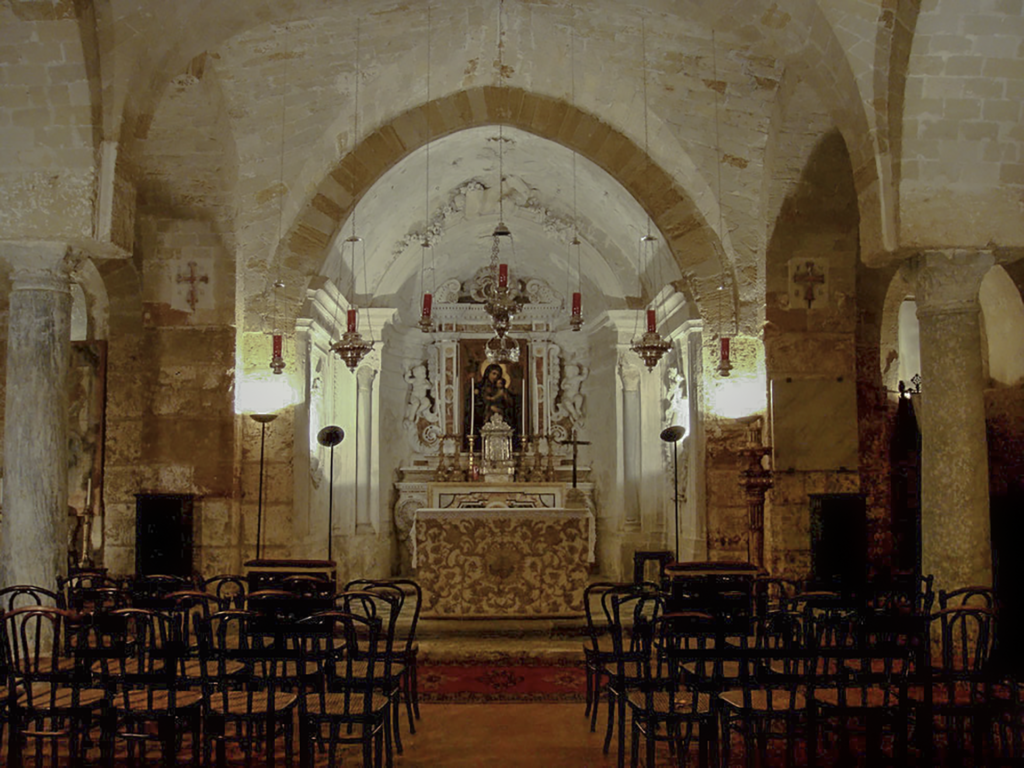The Church of Santa Maria delle Grazie, now called the Crypt, is a small church preceded by a narthex, located at the Palatine Chapel and oriented, like Byzantine churches, towards the rising sun. It could date back to the early Norman period, just after the conquest. It is not unusual to think that, soon after the conquest, the Normans equipped the old Emir’s Palace with a small church to hold religious services. Originally dedicated to St Mary of Jerusalem, it consists of a room with a tri-apsed plan, divided into three small naves by two late antique columns. The roof is covered with ogival cross vaults, two for each nave. The church also contains a sacellum in front, once the burial chamber of William I, and ambulatories around the perimeter of the building. After his death in 1166, William I was temporarily laid to rest in this barrel-vaulted room in the nave, before being moved to Monreale. The high polychrome and mixed marble altar, surmounted by festive putti and smooth shaft columns, holds an icon of the Virgin and Child in the centre, probably dating from the 17th century. Between the apse and the prosthesis, there was a fresco of Hodegetria, which has now been transferred to canvas. The precious Byzantine icon is evidence of the frescoes that once decorated the small church, which can now also be seen through some crosses painted in red on the ashlars of the piers of some of the arches.